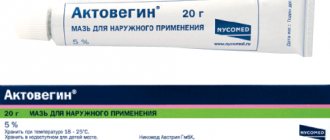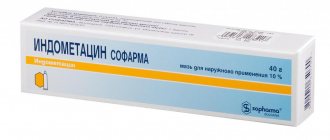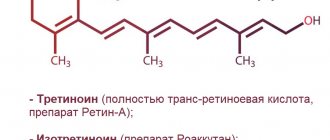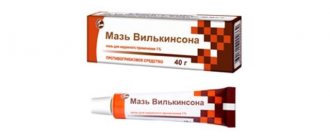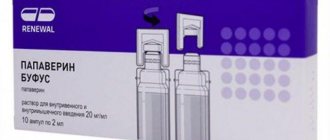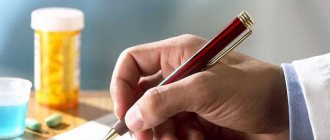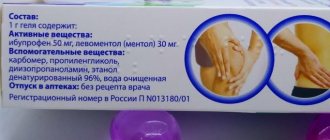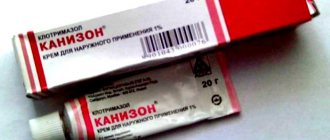Actovegin is a popular drug that accelerates metabolic and regenerative processes and improves cell nutrition. It is a hemoderivative obtained through ultrafiltration and dialysis. Actovegin therapy improves blood supply and ensures proper supply of vital substances (oxygen and glucose) to damaged tissue areas. The drug is used for many diseases and pathological conditions and is well tolerated by patients. Pharmaceutical group: antihypoxants and antioxidants.
Composition, physical and chemical properties, price
The drug is available in five dosage forms:
| Main substance | Excipients | Physicochemical characteristics | Package | |
| Solution for infusion in NaCl or dextrose solution | Blood components: Hemoderivat deproteinized from calf blood 25 or 50 ml | Sodium chloride, water for injection + dextrose (for dextrose solution) | Transparent solution, colorless or slightly yellow | 250 ml of solution in a glass bottle with a stopper and an aluminum cap. The bottle is placed in a cardboard box, which is protected by a transparent holographic sticker with tamper evident. Price: 700-800 rub. |
| Injection | Actovegin concentrate (converted to Hemoderivat deproteinized from calf blood) 80 or 200 or 400 mg | Sodium chloride, water for injection | Yellowish solution, transparent, practically free of particles | Actovegin is produced in ampoules of 2, 5 and 10 ml with a break line. 5 ampoules per package (contour, plastic) - 1 or 5 packages in a cardboard pack. Each pack is protected by a transparent sticker with a hologram and a tamper evident seal. Price: 2 ml No. 25: 1200-1400 rubles; 5 ml No. 5: 500-600 rub; 10 ml No. 5: 1000-1300 rub. |
| Pills | Blood components: Hemoderivat deproteinized from calf blood 200 mg | Magnesium stearate, povidone, talc, cellulose. Shell: mountain glycol wax, acacia gum, hypromellose phthalate, diethyl phthalate, yellow quinoline dye, macrogol, aluminum varnish, povidone K30, talc, sucrose, titanium dioxide | Round, shiny, greenish-yellow film-coated tablets | 50 tablets each in dark glass bottles, in a cardboard pack Price: 1400-1700 rub. |
| Gel 20% | Hemoderivat deproteinized from the blood of calves 20 ml/100 g | Carmellose sodium, calcium lactate, propylene glycol, methyl parahydroxybenzoate, propyl parahydroxybenzoate, purified water | The gel is homogeneous, yellowish or colorless | 20, 30, 50, 100 g in aluminum tubes, in cardboard packs Price: 20 g: 170-200 rub. |
| Cream 5% | Hemoderivat deproteinized from the blood of calves 5 ml/100 g | Macrogol 400 and 4000, cetyl alcohol, benzalkonium chloride, glyceryl monostearate, purified water | Smooth white cream | 20, 30, 50, 100 g in aluminum tubes, in cardboard packs Price: 20 g: 125-150 rub. |
| Ointment 5% | Hemoderivat deproteinized from the blood of calves 5 ml/100 g | White paraffin, cholesterol, cetyl alcohol, propyl parahydroxybenzoate, methyl parahydroxybenzoate, purified water | Ointment of homogeneous consistency, white | 20, 30, 50, 100 g in aluminum tubes, in cardboard packs Price: 20 g: 115-140 rub. |
Analogues and substitutes
If we talk about analogues of the drug Actovegin based on the active substance, then there is only one drug - Solcoseryl. Its action is also based on a deproteinized hemoderivative from the blood of calves. Indications, contraindications and features of use for the two drugs are also similar, but Solcoseryl contains preservatives, while Actovegin is completely natural. These components increase shelf life, but increase the risk of hypersensitivity and allergic reactions.
Another medicine close to Actovegin is Cerebrolysin. It contains biologically active neuropeptides that are obtained from the brain of pigs. The drug has a similar mechanism of action - it improves metabolic processes, has an antioxidant effect and reduces the manifestations of ischemia. Compared to Actovegin, Cerebrolysin more often causes unwanted reactions in the body, but its effectiveness has been proven by traditional medicine. In addition, Cerebrolysin can be used in the treatment of children.
pharmachologic effect
The drug is an antihypoxant, has a positive effect on the transport and consumption of glucose, stimulates the metabolism of oxygen by cells, which, in turn, leads to the stabilization of cell membranes during ischemia and a decrease in lactate synthesis. The antihypoxic effect begins to appear no later than 30 minutes after parenteral administration and internal administration, reaching its maximum after 2-6 hours.
Actovegin leads to an increase in the concentration of adenosine diphosphate, adenosine triphosphate and phosphocreatine, as well as a number of amino acids such as aspartate, glutamate and gamma-aminobutyric acid. The drug has especially proven itself in the treatment of diabetic polyneuropathy, has a positive effect on the absorption and utilization of oxygen and exhibits an insulin-like effect associated with stimulation of glucose transport and oxidation. Therapy with Actovegin leads to a significant reduction in unpleasant symptoms such as burning, pain, paresthesia and numbness of the lower extremities. During treatment with Actovegin, sensitivity disorders are significantly reduced and the mental state is stabilized.
When Actovegin is applied topically, tissue healing processes are activated, which, as is known, occur with increased energy consumption. An increase in the energy metabolism of cells, the consumption and utilization of oxygen and glucose by cells lead to an increase in energy metabolism, which results in the activation of reparative processes.
Side effects
Treatment with Actovegin is usually well tolerated by patients, but side effects are sometimes possible, including:
- allergic reactions up to anaphylactic shock;
- dyspeptic manifestations - abdominal pain, nausea, loss of appetite, diarrhea;
- a feeling of suffocation and constriction in the chest, difficulty swallowing, coughing;
- pain in muscles and joints;
- headaches, weakness, drowsiness or excessive agitation, dizziness.
If undesirable reactions of the body develop, treatment must be stopped. To improve your well-being, symptomatic therapy is used, and if symptoms persist, you should consult a doctor. Cases of overdose with Actovegin are unknown, but it can be assumed that if you take too much of the drug, the severity of side effects will increase.
Indications for use
Solution
- vascular and metabolic disorders of the central nervous system, including ischemic stroke, head injury, cerebrovascular insufficiency, dementia;
- peripheral vascular disorders, arterial and venous, as well as the consequences of such disorders: trophic ulcers, arterial angiopathy;
- diabetic polyneuropathy;
- skin damage: wounds and ulcers of various origins, trophic lesions (bedsores), burns, long-lasting wounds;
- treatment and prevention of radiation injuries to the mucous membrane and skin during radiation therapy.
Pills
- complex therapy for brain dysfunctions described above;
- vascular disorders and their consequences;
- diabetic polyneuropathy.
Gel, ointment Actovegin
- inflammatory diseases and wounds of the mucous membranes and skin: burns of various etiologies, cuts, scratches, abrasions, cracks;
- weeping ulcers (as initial therapy);
- treatment and prevention of damage to the skin and mucous membranes due to exposure to radiation;
- treatment of wound surfaces before skin transplantation in the treatment of burns.
Cream
All indications listed for the gel, plus:
- prevention and treatment of bedsores.
Conclusion
Actovegin has confirmed its effectiveness in the treatment of many diseases. But despite this, it is impossible to carry out drug therapy on your own. Any treatment should begin with a consultation with a doctor, because only he can give an adequate assessment of the patient’s condition and prescribe the necessary medications and appropriate doses. Self-medication can not only not eliminate the disease, but also harm the body.
During treatment with Actovegin, you need to monitor your body’s reaction and if an allergic reaction occurs, stop taking the medication, take an antihistamine and inform your doctor. Compliance with the recommendations of a specialist is the key to successful treatment of diseases, prevention of their complications and relapses.
Contraindications
For all dosage forms
- hypersensitivity to any component of the drug or similar drugs.
Solution
- decompensated heart failure;
- oliguria, anuria;
- pulmonary edema;
- fluid retention in the body.
Use with caution in laboratory-established hyperchloremia and hypernatremia.
Pills
Prescribed with caution for: anuria, pulmonary edema, oliguria, heart failure grade 2-3, overhydration, lactation and pregnancy.
Benefits and harms
Actovegin is a medicine with unproven effectiveness - it is used in the CIS countries, and in most Western countries it is prohibited. Despite this, studies show that the drug helps to significantly improve the condition of patients with diseases associated with impaired metabolic and trophic processes. However, it should be used only as directed by a doctor - the active substance can cause allergic reactions and side effects. If there are contraindications to treatment, you should consult a doctor who will replace the drug with a safer one.
Share with your friends
Do something useful, it won't take much time
Actovegin during pregnancy
Many pregnant women are interested in why this drug is prescribed during pregnancy. The drug improves metabolic processes in blood vessel cells, enhancing the transport of glucose and oxygen and improving their absorption. This leads to better functioning, nutrition and regeneration of cells, improved energy supply and nutrient supply, circulation of venous and arterial blood and removal of metabolic products.
These features of the drug make it possible to use it in the treatment of conditions that require restoration of damaged tissues and their functions, as well as increased blood circulation in them. During pregnancy, treatment with Actovegin allows you to restore or improve uteroplacental blood flow and correct metabolic processes between the woman’s body and the fetus that flow through the placenta.
Thus, the indications for prescribing the drug to pregnant women are:
- fetoplacental insufficiency;
- threat of miscarriage;
- detachment of the ovum;
- placenta previa;
- history of miscarriages and non-developing pregnancy;
- intrauterine fetal hypoxia;
- late gestosis;
- threat of premature birth;
- intrauterine growth retardation;
- fetal dystrophy, as determined by ultrasound;
- phlebeurysm;
- oligohydramnios;
- diabetes mellitus and other conditions.
Some gynecologists claim that women who take Actovegin endure childbirth more easily.
How much do drug substitutes cost?
There are no more exact analogues of the drug in medicine, but pharmacies have drugs that are considered substitutes for Actovegin. These are medications that have similar indications and mechanisms of action on the body. They are used to improve metabolic and trophic processes in tissues, as well as to improve blood circulation and reduce the manifestations of hypoxia. Among them there are both cheap and more expensive drugs of Russian and Western origin.
| A drug | Active substance | Manufacturer | How much does it cost, rub |
| Solcoseryl | Deproteinized dialysate from the blood of healthy dairy calves | MEDA Pharmaceuticals Switzerland GmbH, Switzerland, MEDA Pharma, Russia | 900 |
| Cortexin | Cortexin (complex of water-soluble polypeptide fractions) | Geropharm, Russia | 2600 |
| Chime | Dipyridamole | Berlin-Chemie AG/Menarini Group, Germany | 1400 |
| Mexidol | Ethylmethylhydroxypyridine succinate | Pharmasoft NPK, Russia | 1100 |
| Cavinton | Vinpocetine | Gedeon Richter, Hungary | 450 |
| Piracetam | Piracetam | Shreya Life Sciences Pvt. Ltd., India | 130 |
| Cerebrolysin | Cerebrolysin concentrate (a complex of peptides derived from porcine brain) | Hameln Pharmaceuticals GmbH, Germany | 3400 |
Substitutes for Actovegin are not its complete analogues. They have different compositions, lists of indications and side effects, so before replacing one medicine with another, you should consult your doctor. The cost or availability of the drug should not become the main selection criteria - the drug should be selected depending on the clinical course of the disease and the condition of the patient’s body.
Actovegin for children
The valuable properties of the drug, such as improving the nutrition of damaged tissues, enhancing the metabolism of glucose and oxygen, are used for effective cell restoration that occurs against the background of fetal hypoxia. This pathology often complicates pregnancy and childbirth, leads to one or another neurological symptoms and is associated with circulatory deficiency, severe toxicosis, low hemoglobin in the blood of a pregnant woman, placental insufficiency, etc.
The use of Actovegin in children is justified in the following cases:
- chronic hypoxia, accompanied by functional or organic changes in the brain;
- acute hypoxia (prolonged labor, entanglement with the umbilical cord, etc.);
- brain injuries.
Most often, the drug is prescribed in the presence of chronic hypoxia that occurs during intrauterine life.
- Newborns are prescribed Actovegin injections intramuscularly or intravenously at a dose of 0.4–0.5 ml/kg once a day.
- Children 1-3 years old at a dose of 0.4–0.5 ml/kg once a day. IM or IV.
- Children 3-6 years old at a dose of 0.25–0.4 ml/kg once a day. IM or IV.
Patients' opinions
Reviews about the drug are positive. Many patients treated with Actovegin note its positive effect. He helped Nikolai cope with intercostal neuralgia caused by stress. At the same time, Actovegin was prescribed in ampoules of 5 ml intramuscularly at night. After a week of such therapy, the patient felt better, the pain went away, and his condition improved.
Anastasia 29. Since childhood, she was a weak child, and at the age of 21 she was diagnosed with herpetic neuralgia (affects the area around the eyes). After treatment with Actovegin (im injection) for a month, the disease disappeared. In addition, the therapy helped to increase the body's protective properties.
Alexey from Sochi suffers from type 2 diabetes and courses of therapy with Actovegin help him prevent complications. For Anna from Minsk, the drug helped prevent placental abruption and premature termination of pregnancy.
Dosage
Solution
Inject at a rate of about 2 ml/min. Since the development of anaphylactic shock is possible, sensitivity testing to the drug should be carried out before administration. The duration of the course is set individually. After opening the bottle, the solution cannot be stored.
- Ischemic stroke – 250-500 ml or 1000-2000 mg per day. for 14 weeks, intravenously. Then transferred to tablet form.
- Vascular and metabolic disorders of the central nervous system - initially 250-500 ml or 1000-2000 mg per day. within 14 weeks. Next it is transferred to tablet form.
- Peripheral circulation disorders and their consequences - 250-500 ml or 1000-2000 mg once a day. or several times over 7 days with a switch to Actovegin tablets.
- Diabetic polyneuropathy – 2000 mg per day. IV for 3 weeks, then transfer to tablet form - 2-3 tablets. three times a day for 4-5 months.
- Wound healing - 250 ml or 1000 mg IV, every day or several times every 7 days. Additionally, external dosage forms can be used.
- Treatment and prevention of radiation damage to the skin and mucous membranes - 250 ml or 1000 mg IV the day before radiation therapy, every day during radiation exposure and 2 weeks after its completion. Later they switch to Actovegin tablets.
Pills
Take 1-2 tablets. three times a day. Before meals, without chewing, drink plenty of water for 4-6 weeks. After switching to tablets for the treatment of diabetic polyneuropathy, they are taken for 4-5 months. 2-3 tables each
Gel
Apply a thin layer to the required areas 2-3 times a day. When treating ulcerative formations, the gel is applied in a thick layer and covered with a compress or gauze soaked in Actovegin ointment. Change this dressing once a day, if the surface is very wet - 2-3 rubles per day. Later, after the gel, they switch to Actovegin cream or ointment.
Cream
Apply externally, 2 times a day. for a minimum of 12 days. Used throughout the entire regeneration period.
- When treating ulcers after therapy with Actovegin gel, they switch to the dosage form of a cream, which is applied in a thin layer to the wound surface.
- To prevent bedsores, the cream is gently rubbed into areas at risk of their formation.
- To prevent radiation damage, the cream is applied in a thin layer after radiation therapy, as well as between sessions of this treatment.
Ointment
It is also used for at least 12 days in a row during the phase of active tissue regeneration, twice a day.
When treating ulcers, inflammations, wounds of the skin and mucous membranes, the ointment is used as the final link of a three-stage treatment: first, a gel is used, then a cream, and at the final stage, an ointment is applied in a thin layer.
To prevent radiation damage to the skin, the ointment is used after a therapy session and between sessions.
special instructions
For intramuscular and intravenous administration, only those solutions that have been stored under proper conditions can be used. Actovegin ampoules do not contain preservatives, so they should be used immediately after opening. It is necessary to give injections and place IVs in compliance with the rules of hygiene and asepsis. With repeated use, it is important to control the water and electrolyte balance in the body.
The first administration of the drug is best done not at home, but in a medical facility, in order to reduce the risk of development and consequences of anaphylactic shock.
The drug does not have a significant effect on the central nervous system, so it can be used by people who drive vehicles or engage in hazardous activities. However, the possibility of individual reactions should be taken into account.
The compatibility of the active substance with alcohol and other drugs is unknown. To avoid unwanted reactions, it is better to avoid alcoholic beverages during treatment and discuss the composition of complex therapy with your doctor.

